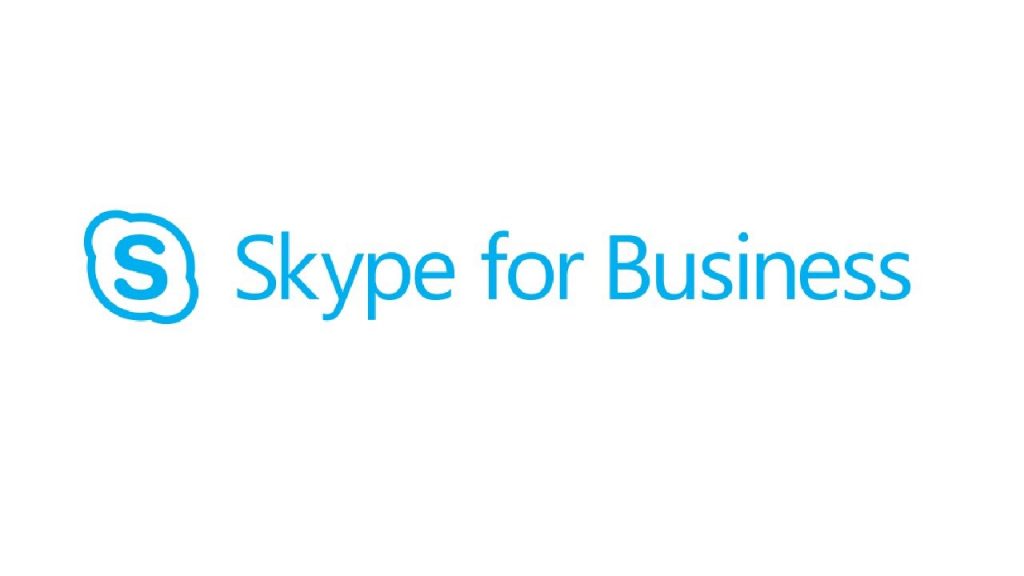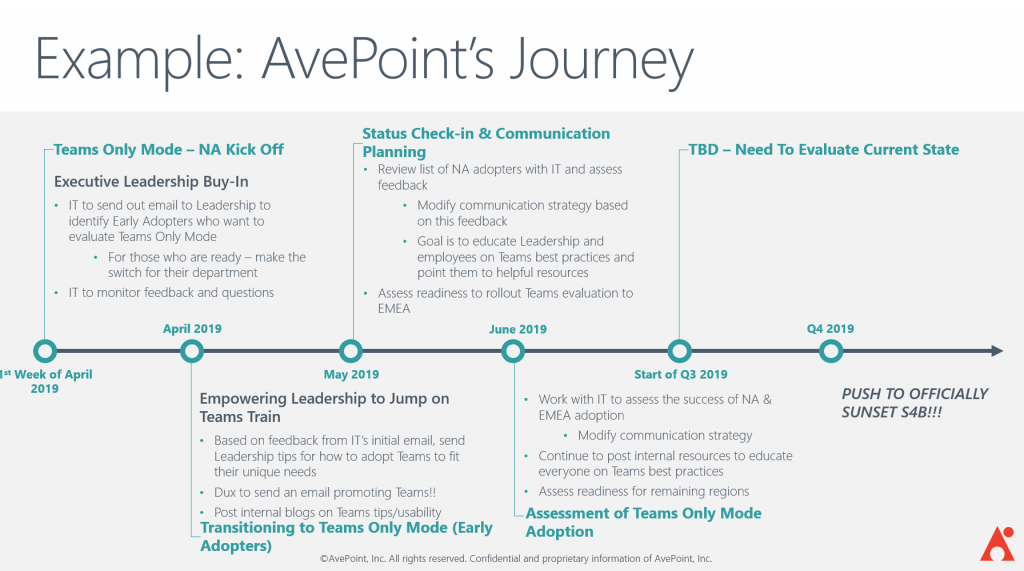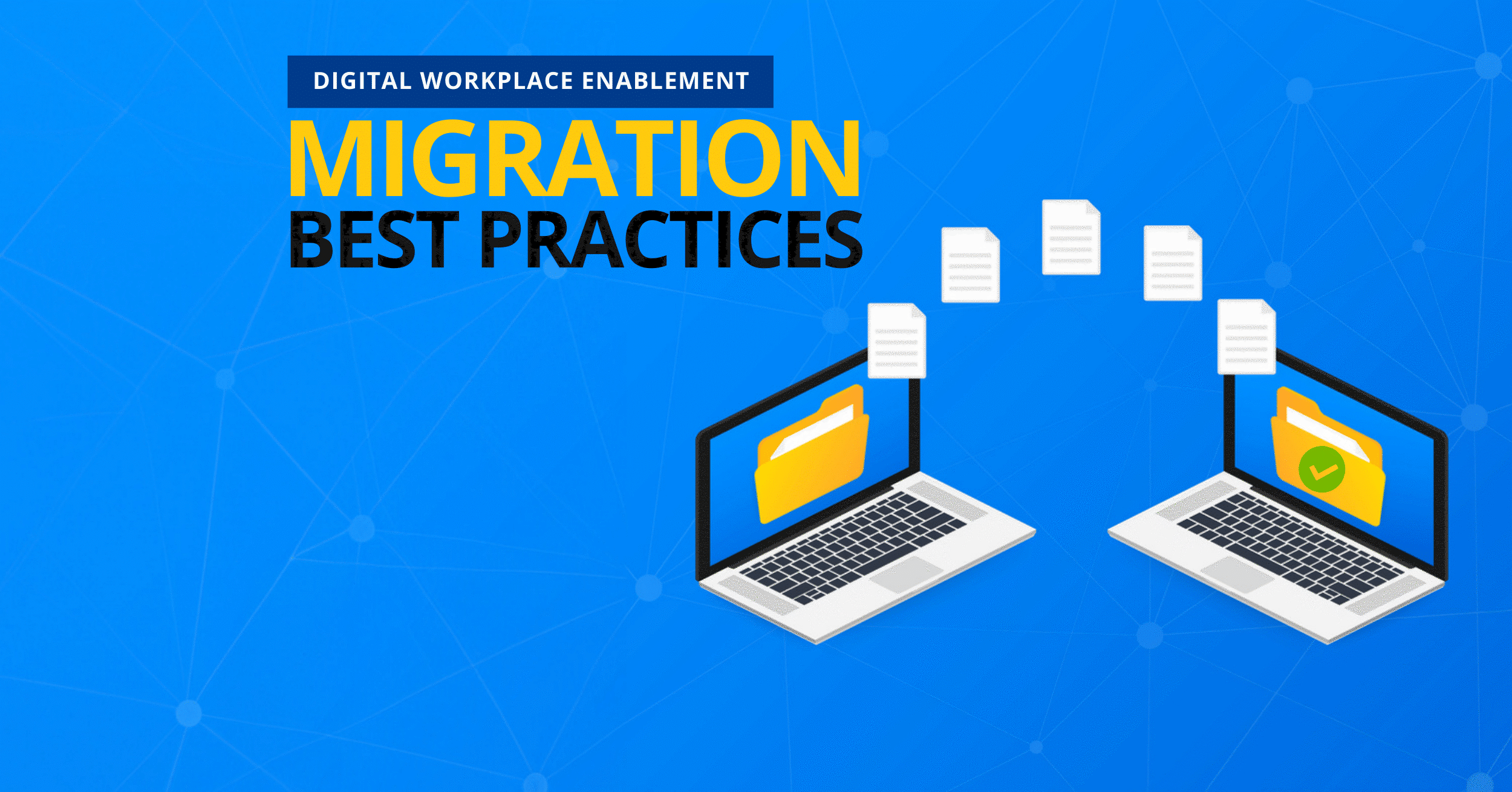What the Official Retiring of Skype for Business Means for Organizations Everywhere

Learn how to tailor Teams to your organization’s needs with our upcoming webinar, “Tailoring Microsoft Teams & Delegating Administration in Office 365.” Register today!
Ready for the next step? Reference our recent blog post “Quick Guide: How to Plan an Upgrade From Skype to Microsoft Teams” for help.
Yesterday, Microsoft officially announced that it’ll be retiring Skype for Business Online on July 31st, 2021. Current customers will remain unaffected, and organizations will be able to continue adding new users like normal.
Starting on September 1st, 2019, however, Microsoft will now be onboarding new customers directly to Microsoft Teams as their primary collaboration platform. It’s also important to note that this won’t affect Skype for Business Server 2019; support for that doesn’t end until October 14, 2025.
This sudden announcement was likely shocking to some and predictable to others. AvePoint CMO Dux Raymond Sy has these words of advice for organizations currently entrenched in Skype for Business Online:
“While the 2021 deadline sounds far away, the transition can take longer than anticipated, so it’s critical for IT teams to get started as soon as possible.
“At AvePoint, we got the Microsoft Teams migration ball rolling by encouraging the employees in our NA offices to switch to Teams-Only Mode earlier this year. That same month we sent leadership tips on how to optimize Teams to suit their needs (and hopefully convince them to become early adopters). A couple of months later, we ran a thorough assessment of how Teams-Only Mode adoption had gone and altered our strategy accordingly.
“As we continue to evaluate the success of Microsoft Teams adoption every quarter, we’re sure to provide as many resources and as much assistance to our employees as we can. We’ve been seeing great progress, and hope to officially sunset Skype for Business in early 2020!
“Based on own experience with this transition thus far, I recommend the following phased approach:
- Gain executive buy-in and highlight the value of Microsoft Teams.
- Incentivize early adopters to adopt Teams-Only mode to experience streamlined communication and collaboration.
- Encourage Microsoft Teams users to share quick wins and best practices with the rest of the organization.”

Do you still have concerns regarding the announcement? Does the two-year window seem too short a timeframe to migrate everything over? And what about challenges that your organization (both IT admins and end users) might face during the move? Read on below for some helpful answers to a few common Skype-to-Teams migration questions.
Is 2 Years Enough Time to Move ALL of Our Data?
There’s a wide variance in how long the transition takes. This can be determined by the number of users or business units that need to be trained, how much data you have, and how complicated the structure of the platform is for your organization. If you have concerns, it might be best to start making migration plans now.
How Will Moving to Microsoft Teams Impact Our Communications with Clients Still Using Skype for Business?
Luckily, it won’t! Along with yesterday’s announcement, Microsoft also revealed that they’ll be rolling out Teams and Skype interoperability in the first quarter of next year. So if you have partners who’re determined to stay firmly in Skype, you won’t have to worry about any breakdown in communications; you’ll be able to chat with and call them directly from Teams.

How Can We Make a Smooth Transition Towards Microsoft Teams Adoption?
There’s a lot that goes into transitioning users to Microsoft Teams, but it’s far from impossible; you just need to be prepared. Microsoft itself is offering assistance in several ways, including a guide, free training sessions, and FastTrack onboarding assistance.
Beyond that, AvePoint has a suite of resources to help make your migration as seamless as possible. Click on your preferred format and start learning best practices today!
- Blog Post: How to Efficiently Transition Users from Skype to Microsoft Teams
- Webinar: How Microsoft Upgraded 200,000 Users from Skype to Microsoft Teams (And You Can Too!)
- eBook: Office 365 and SharePoint Migration Checklist
- Full End-to-End Migration Service: Get more information here!
Want more takes on the latest Microsoft news? Be sure to subscribe to our blog!
As the former Content Marketing Specialist for AvePoint, Brent led the strategy and direction of all AvePoint's blog properties.



